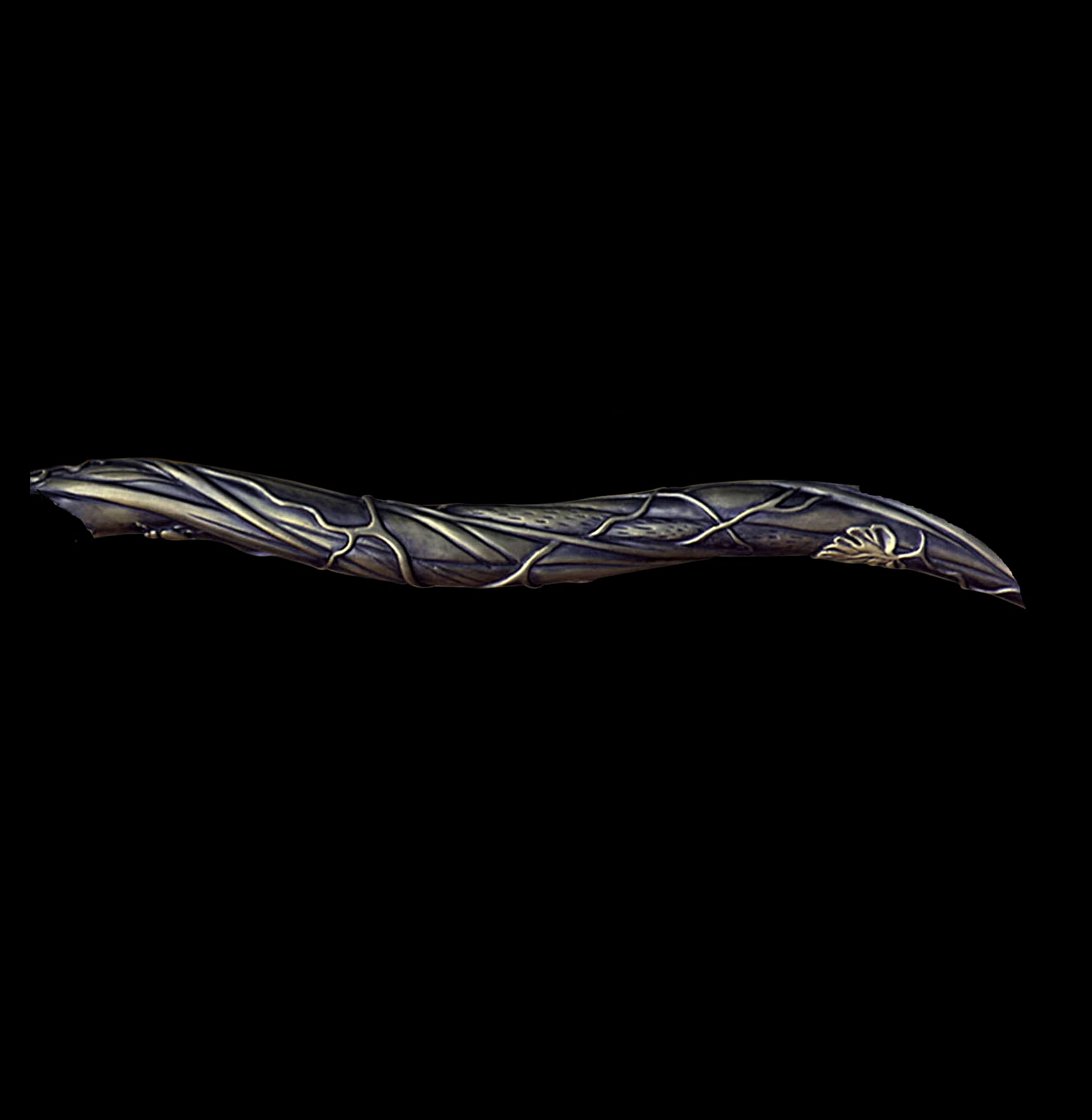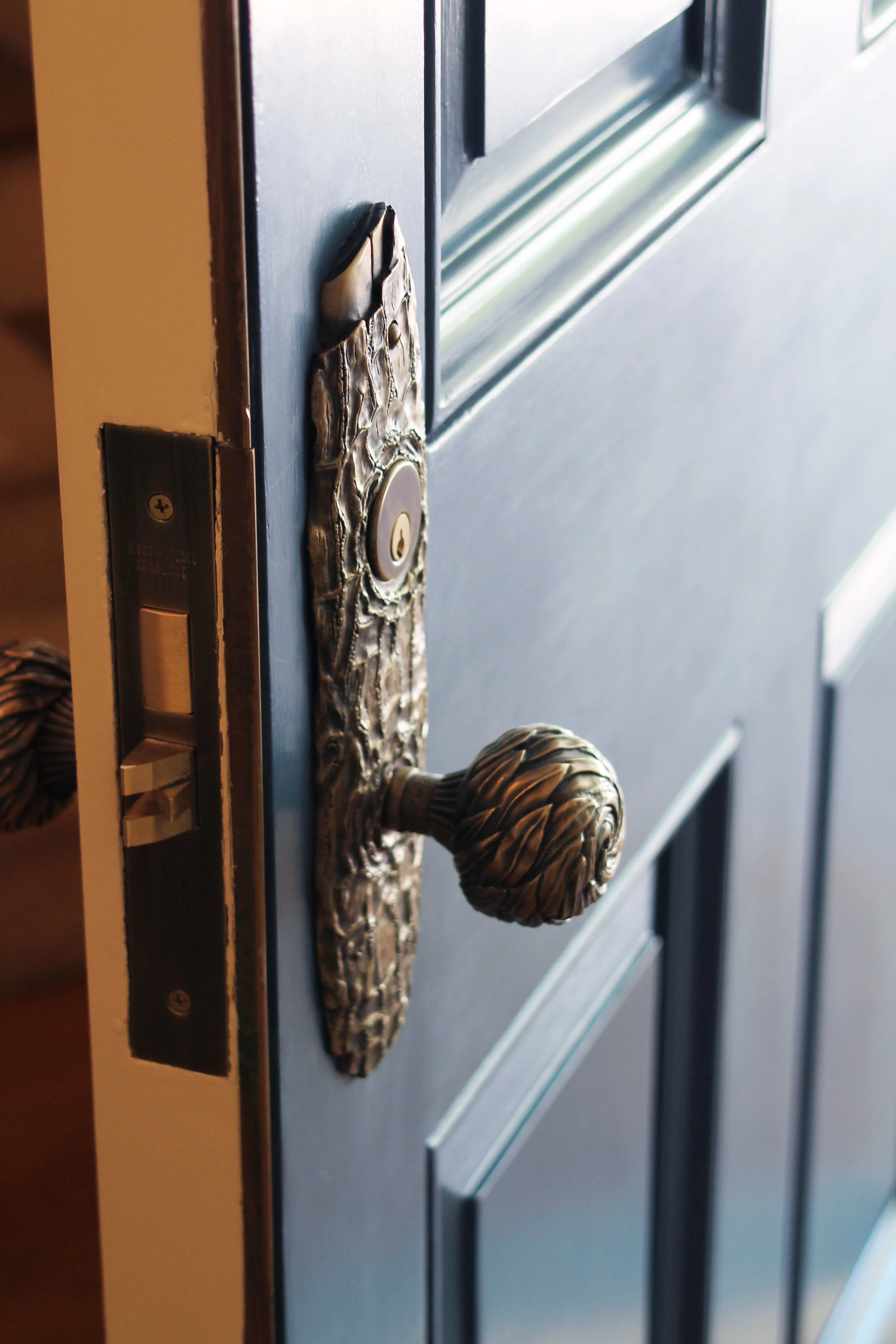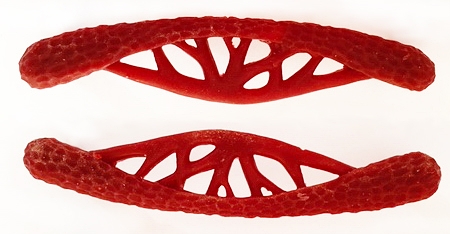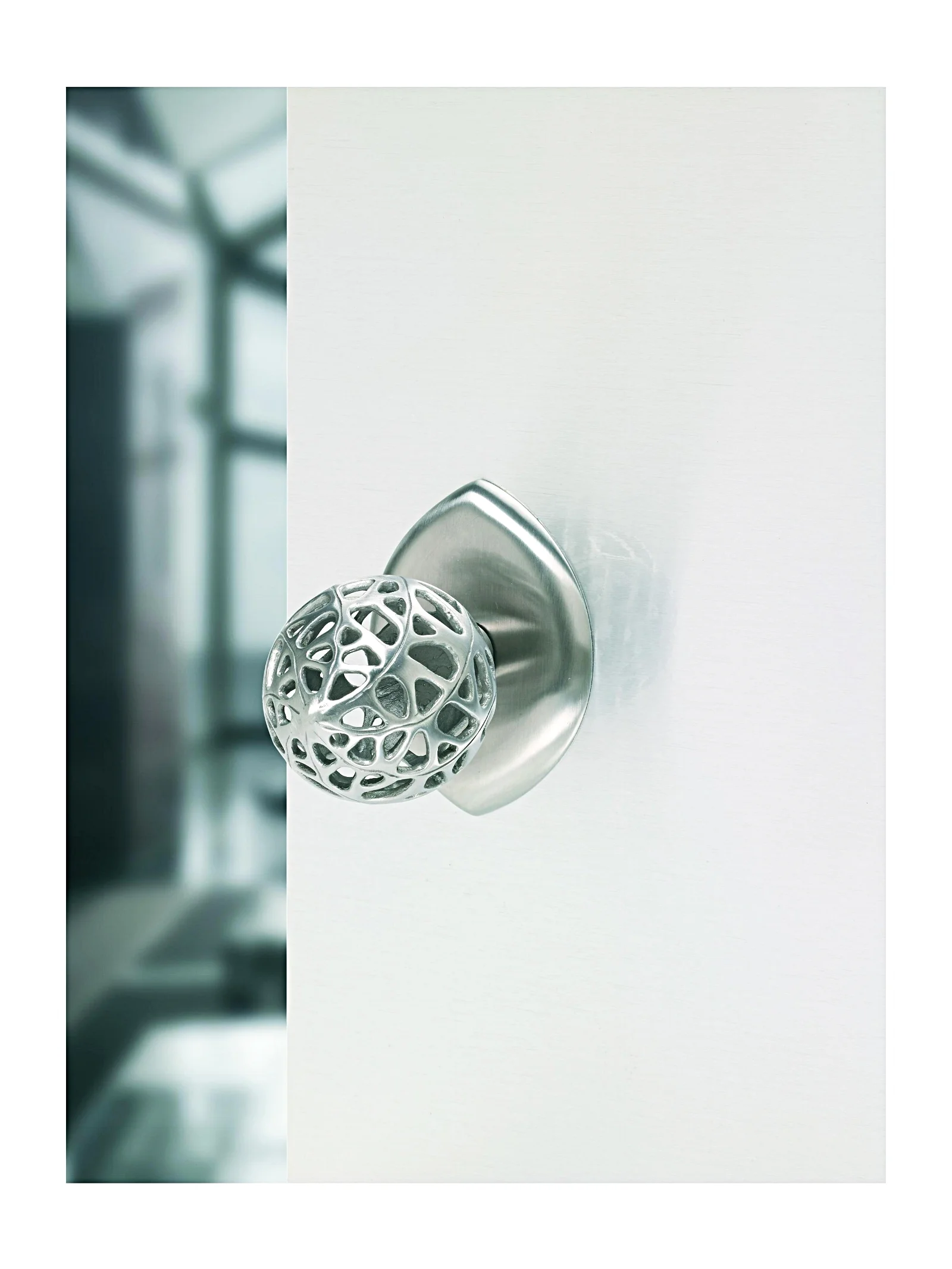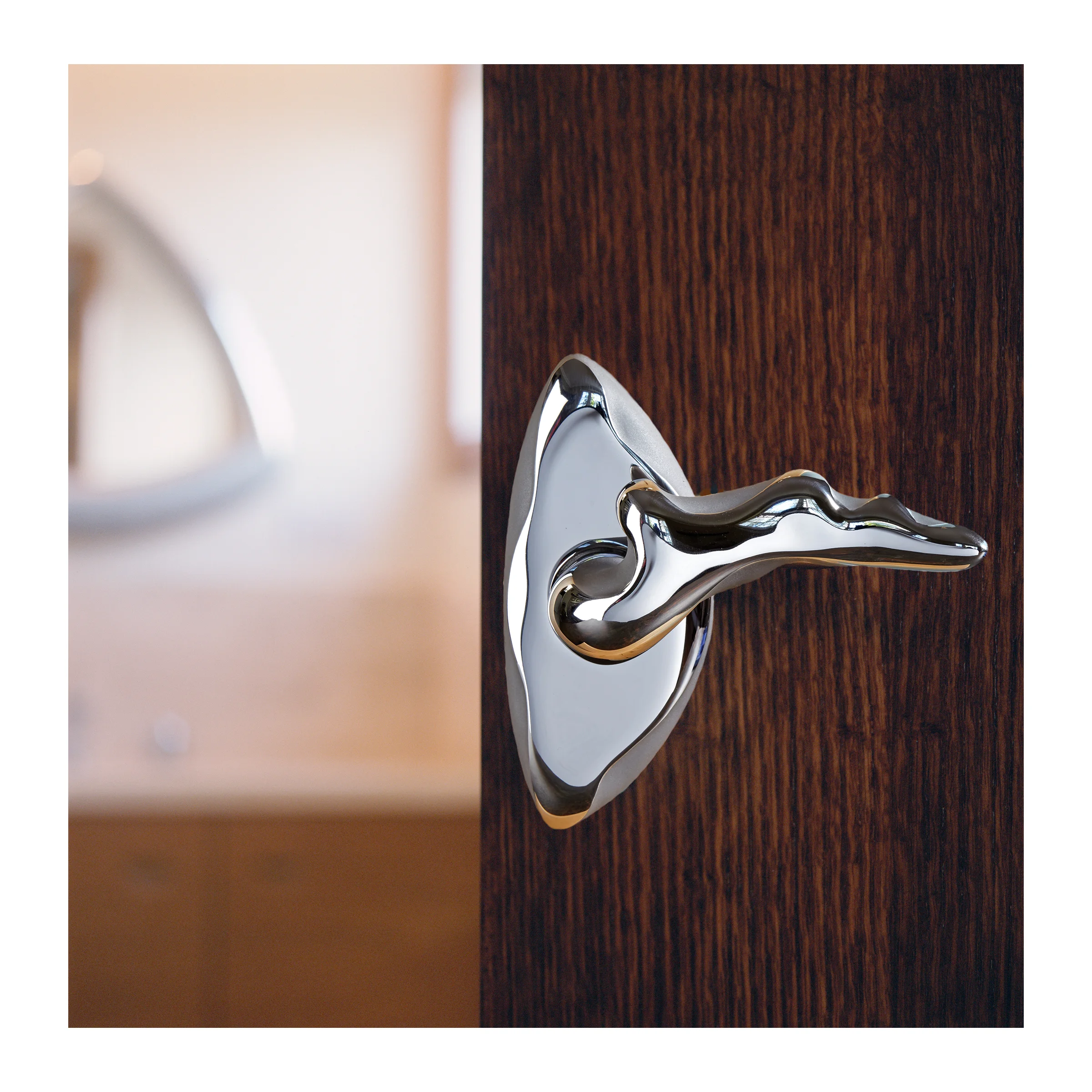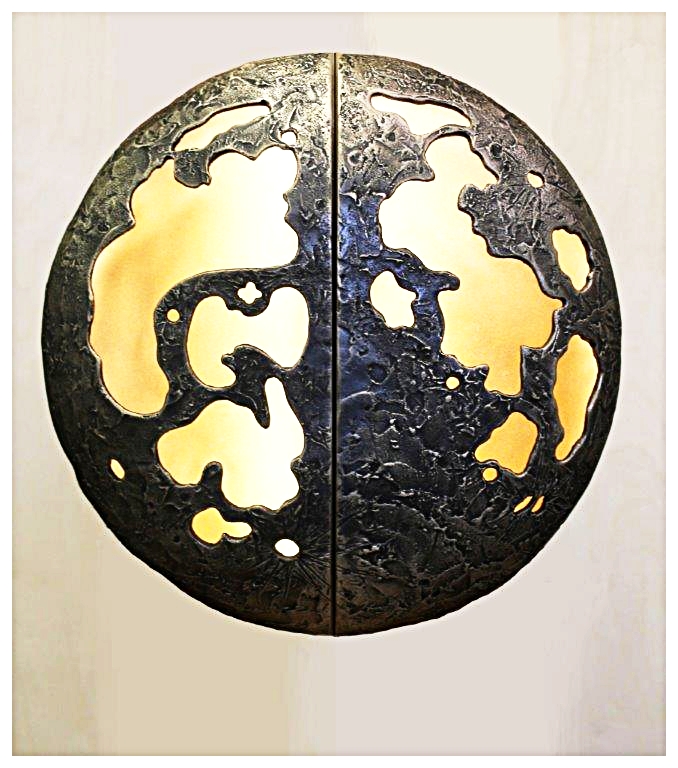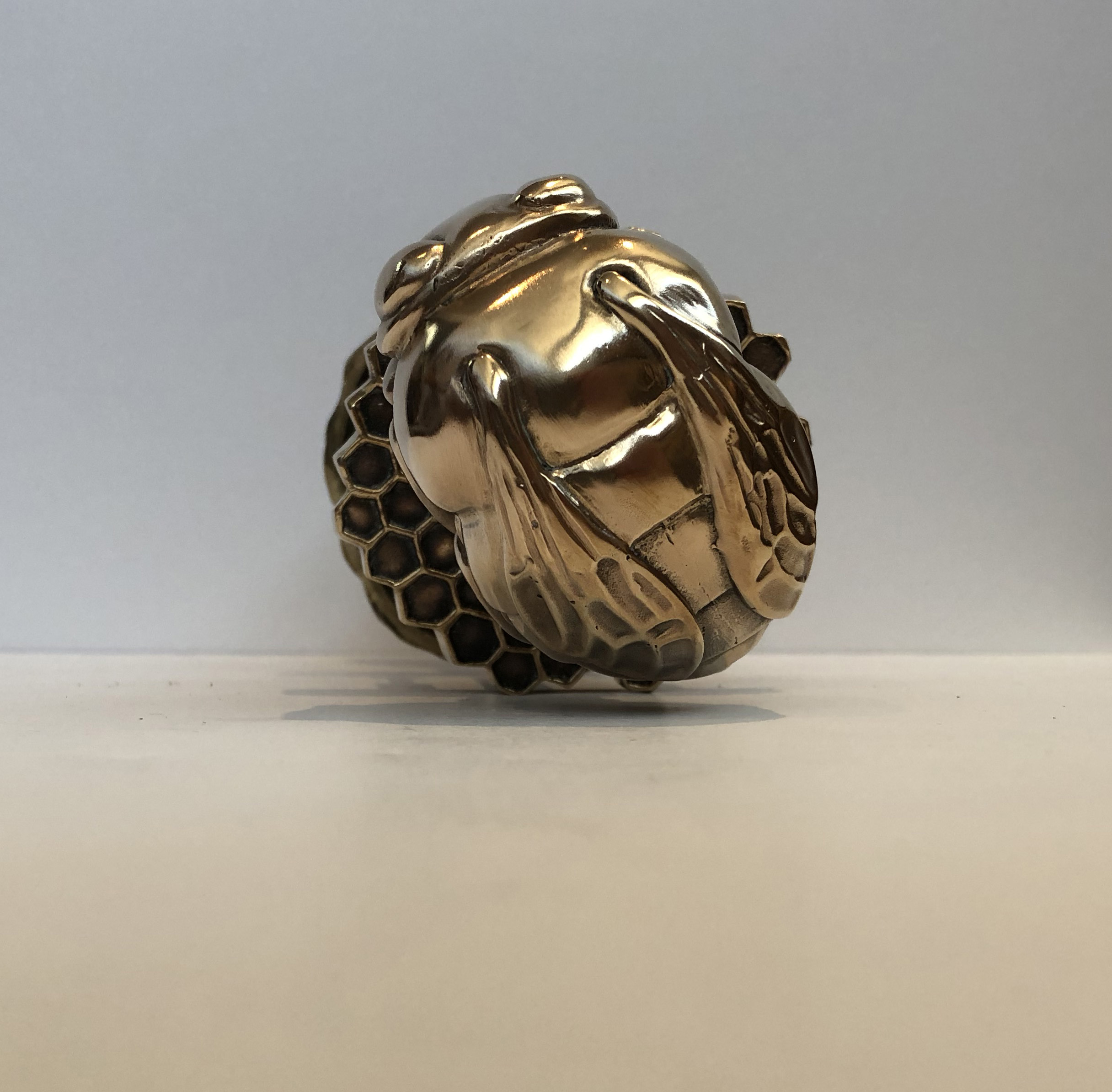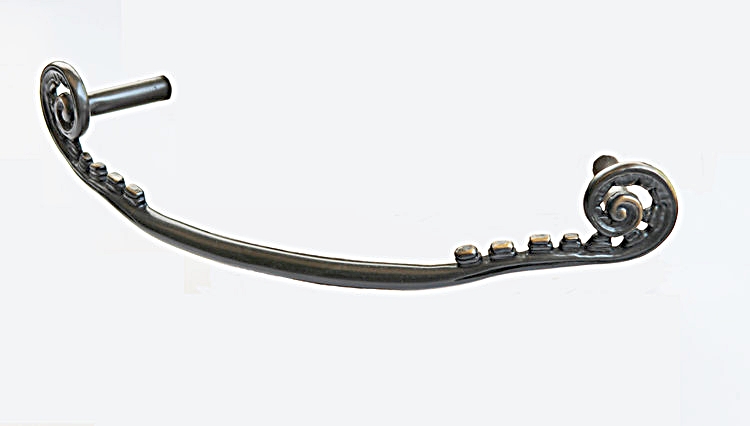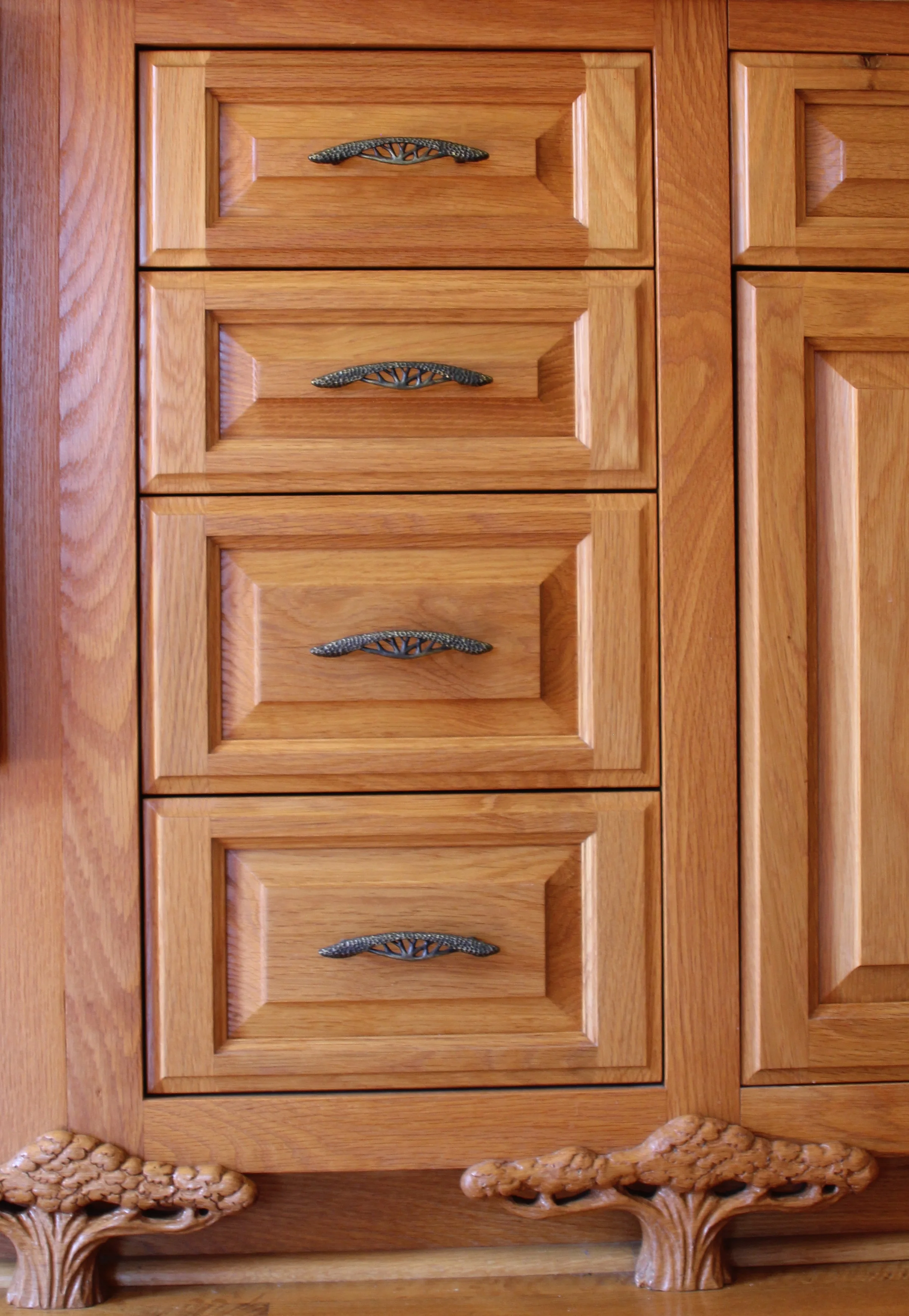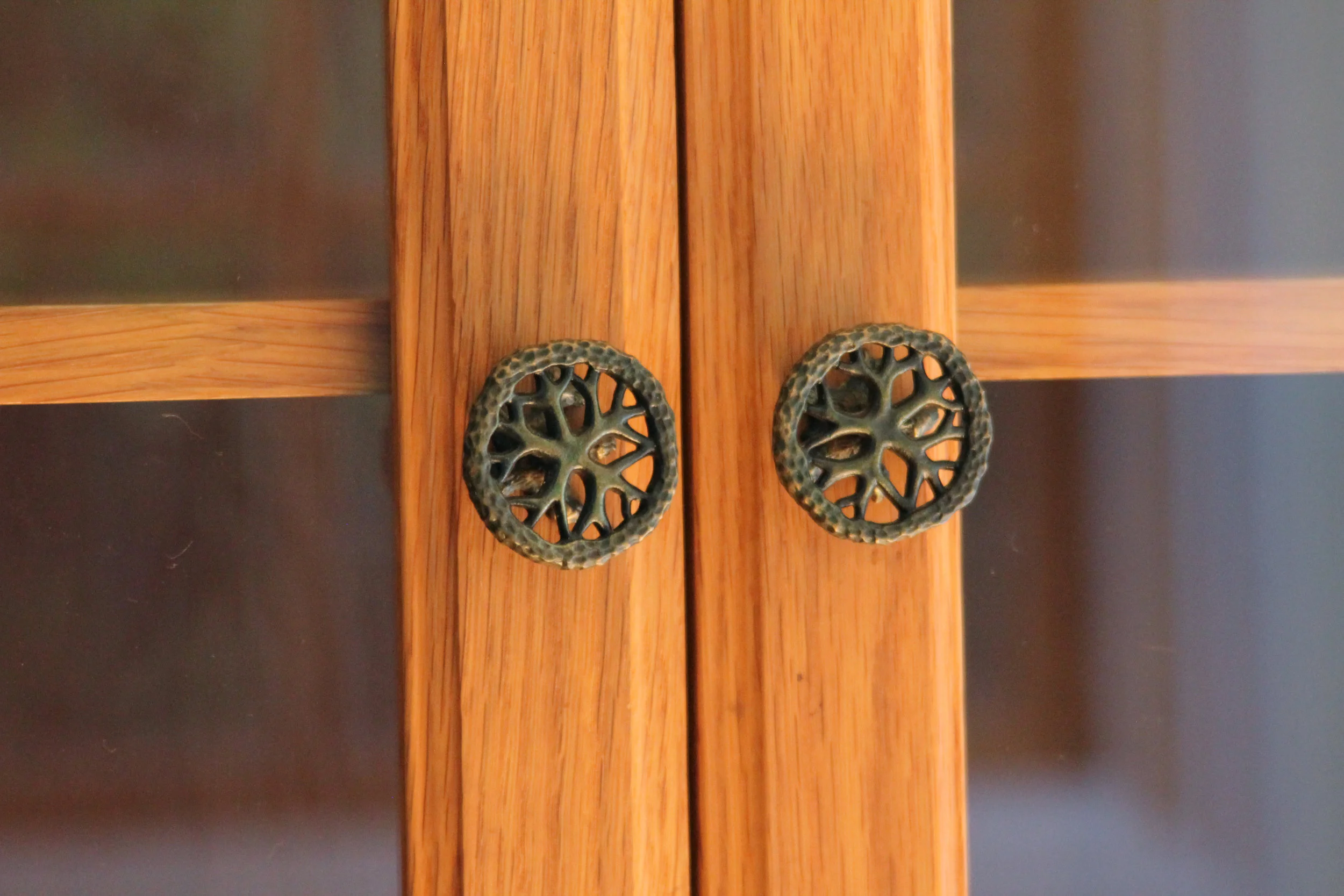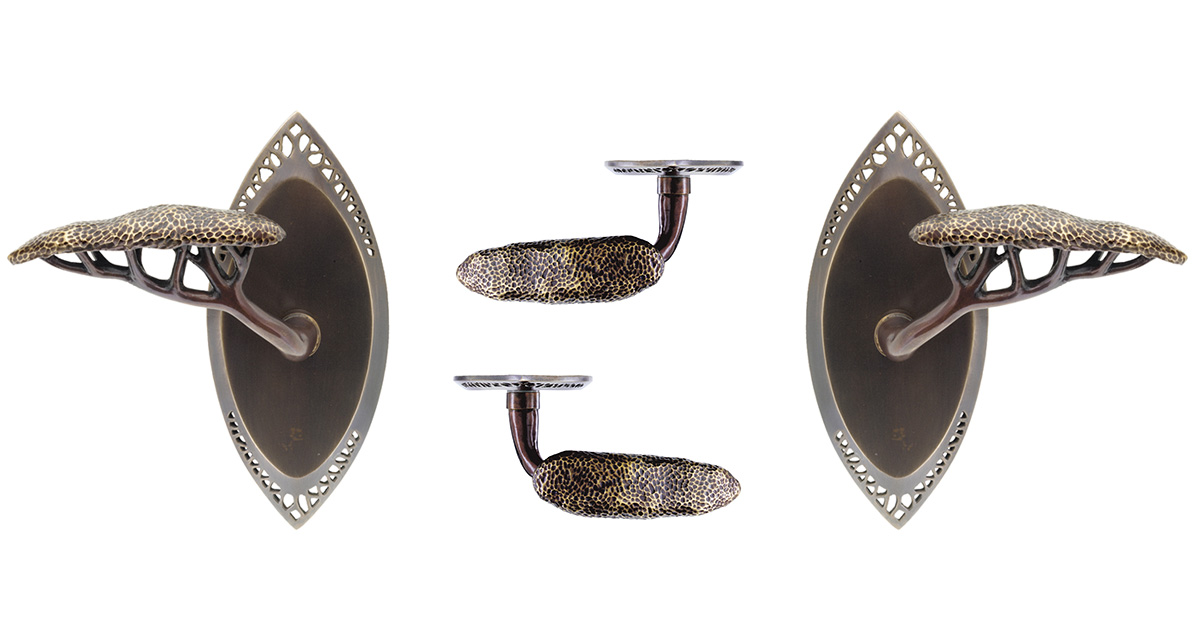Intricately detailed bronze door handles cast in investment caliber bronze are our hallmark but often these details go un-noticed.
The Willow heroic door knob is the signature piece in the Willow collection of bronze entry and interior door handles. Cast in bronze the entwined leaves are finely detailed to create a veritable vortex of swirling filigree. Made in 2 sections the backplate alone is 6.5 lbs. with the center a further 2.0 lbs. making a total of 8.5 lbs. of investment grade bronze. While bronze may not be as precious as gold it still holds its value over time especially when artistic value is added. This door knob is 11” tall by 7” wide and 4” deep (279 x178 x 102mm) and its scale deservedly gained it the title “heroic”.
The Grapevine large door is sizeable at 3"W x 4"D x 42 ½"H (76 x 102 x 1080mm) and contains 11 lbs. of bronze. There are some small difficult to spot details in this piece that remind me of Gringling Gibbons the legendary 17th century Royal wood carver whose works are world renowned for the amount and depth of his relief carvings. Gibbons is known for his 3-dimensional carved leaves, flowers and berries but he also carved more lurid hanging fowl and human skulls. While free of human bones the Grapevine pull does have the odd beetle so may not be suited to those with an insect phobia. For the collectors among us this statement piece is part of a limited edition of 100.
Fibrous gnarly tendrils of bronze cling to the center stem.



